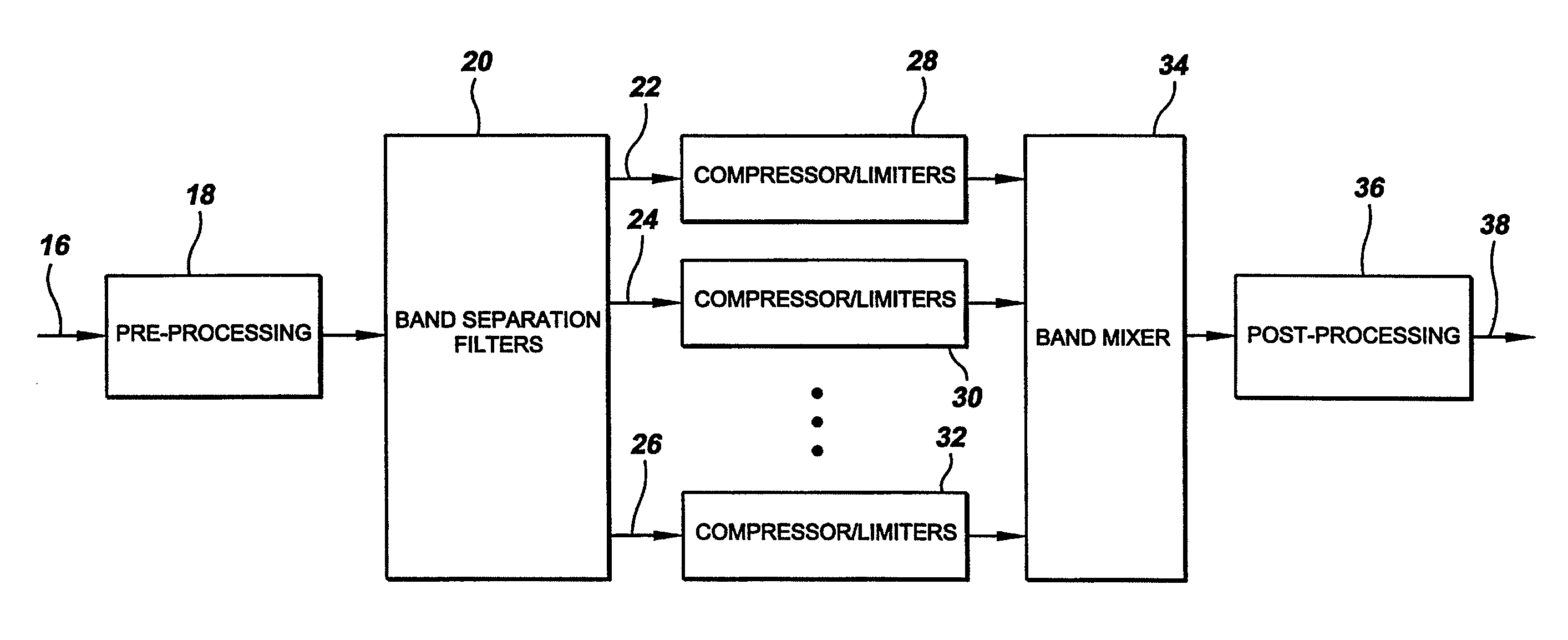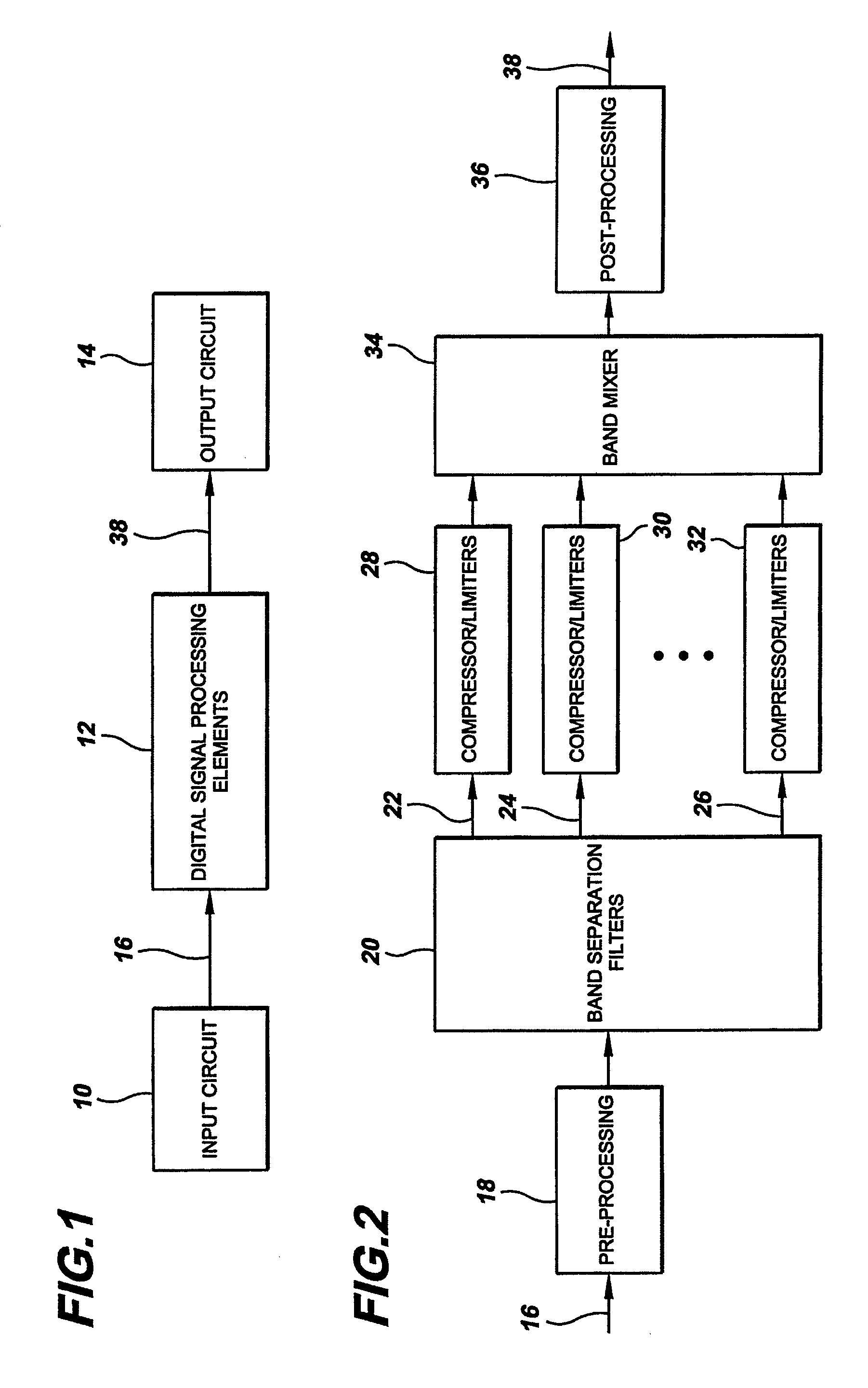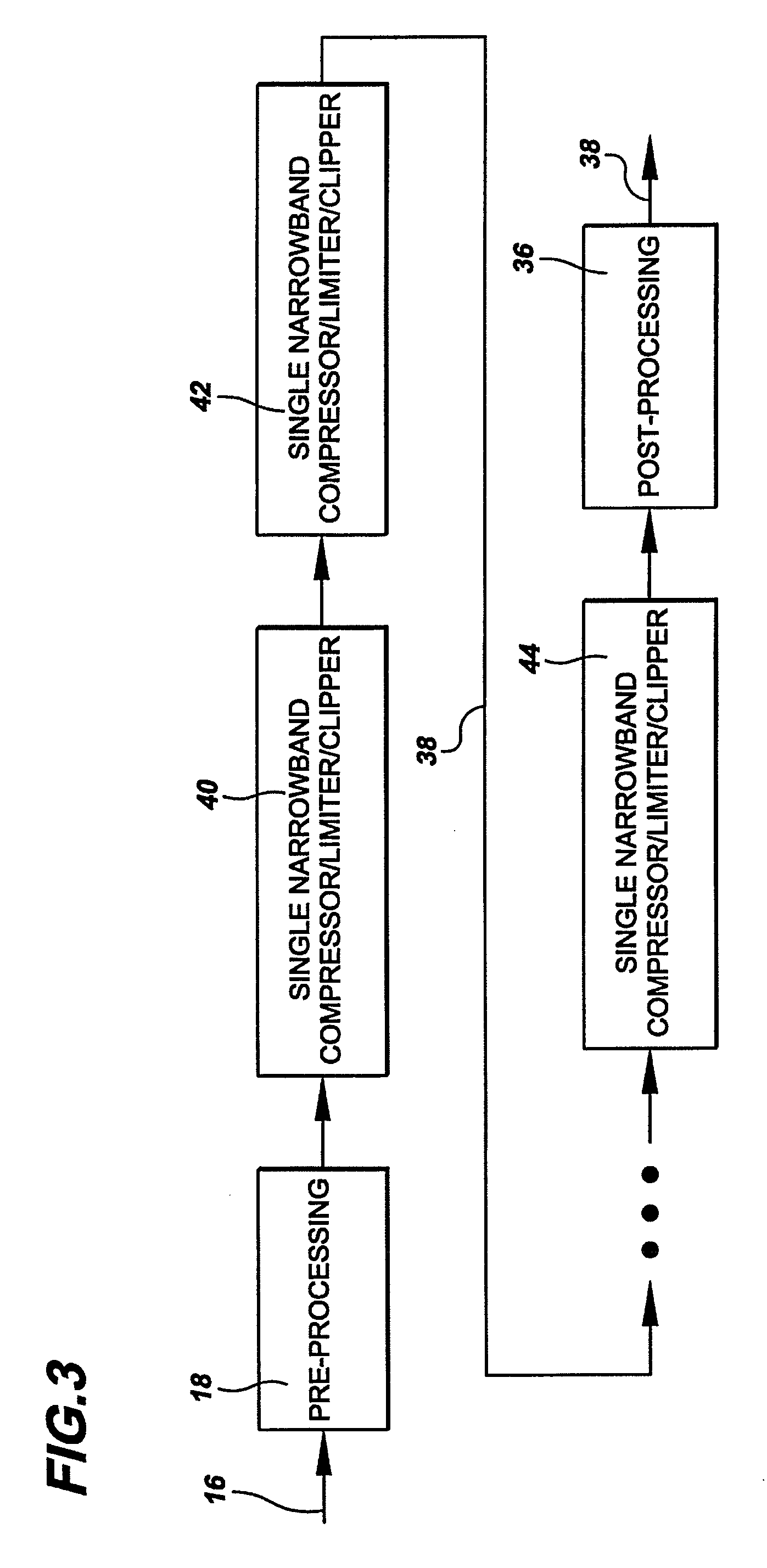Method and apparatus for processing an audio signal in multiple frequency bands
- Summary
- Abstract
- Description
- Claims
- Application Information
AI Technical Summary
Benefits of technology
Problems solved by technology
Method used
Image
Examples
Embodiment Construction
)
[0055]In describing the preferred embodiment of the present invention, reference will be made herein to FIGS. 1-3 of the drawings in which like numerals refer to like features of the invention.
[0056]Referring to FIG. 1, an apparatus according to the present invention includes an input circuit 10, an audio signal processor 12 and an output circuit 14. The input circuit may be any of a number of interface circuits for accepting analog or digital audio data, such as an analog to digital converter (ADC), an S / PDIF receiver, an AES / EBU receiver, a USB interface or an Ethernet interface.
[0057]The audio signal processor 12 may comprise one or more analog or digital processing units. Available digital processing units include fixed point digital signal processors (DSPs), floating point DSPs, field programmable gate arrays (FPGAs), application specific integrated circuits (ASIC), general-purpose microcontrollers and general-purpose microprocessors. Partial or complete implementation with an...
PUM
 Login to View More
Login to View More Abstract
Description
Claims
Application Information
 Login to View More
Login to View More - R&D
- Intellectual Property
- Life Sciences
- Materials
- Tech Scout
- Unparalleled Data Quality
- Higher Quality Content
- 60% Fewer Hallucinations
Browse by: Latest US Patents, China's latest patents, Technical Efficacy Thesaurus, Application Domain, Technology Topic, Popular Technical Reports.
© 2025 PatSnap. All rights reserved.Legal|Privacy policy|Modern Slavery Act Transparency Statement|Sitemap|About US| Contact US: help@patsnap.com



